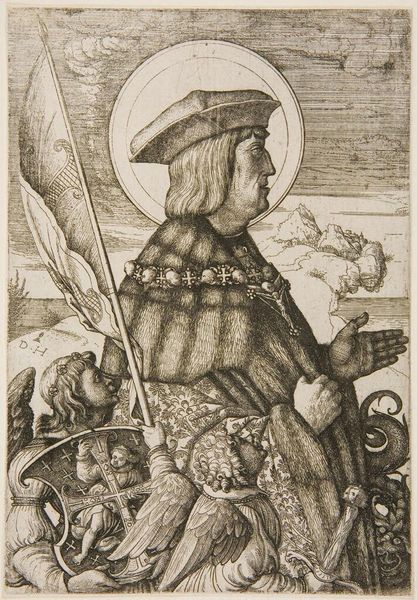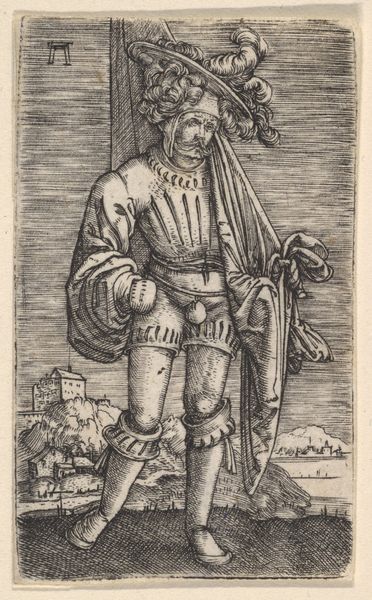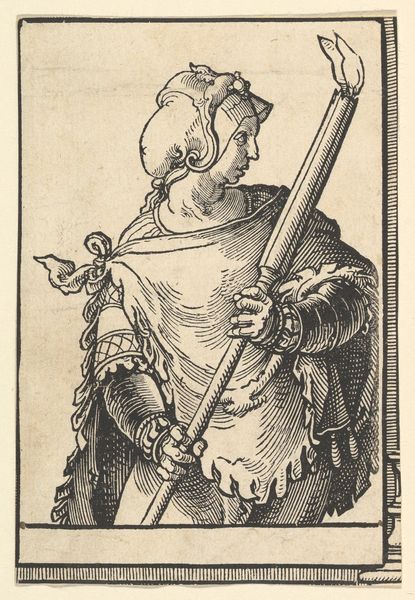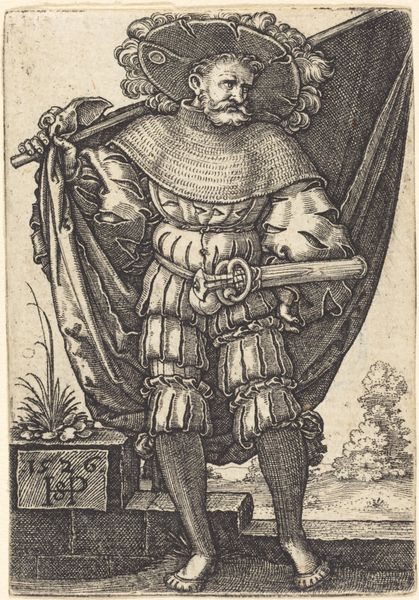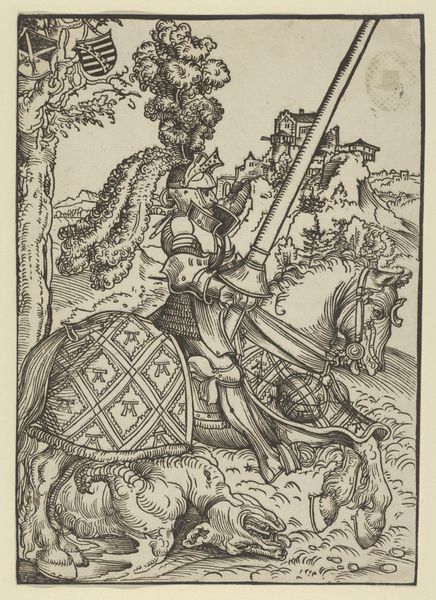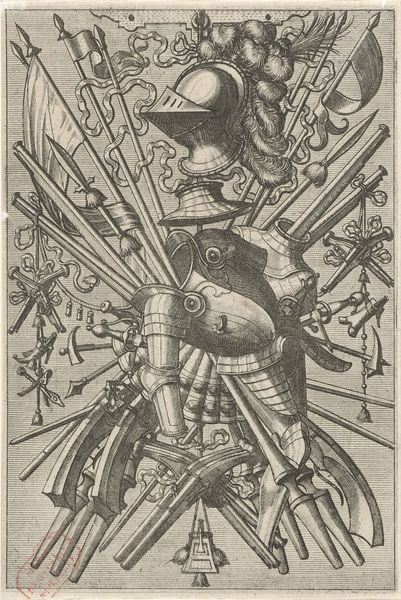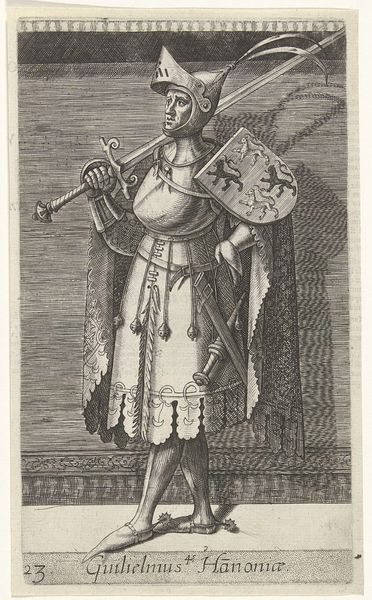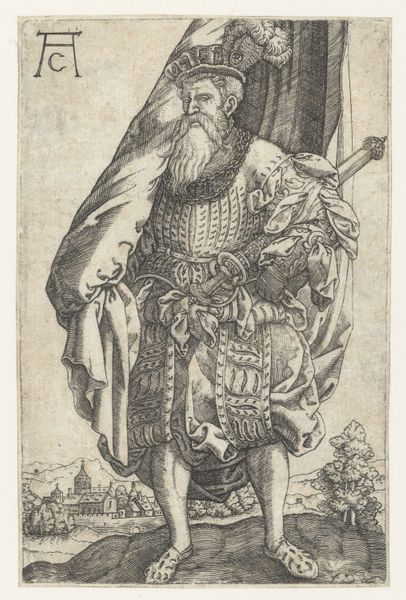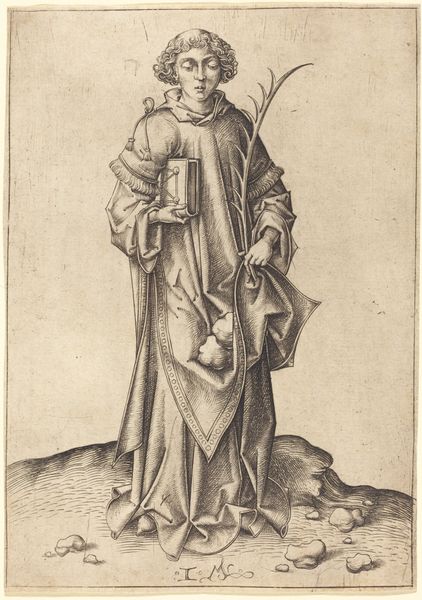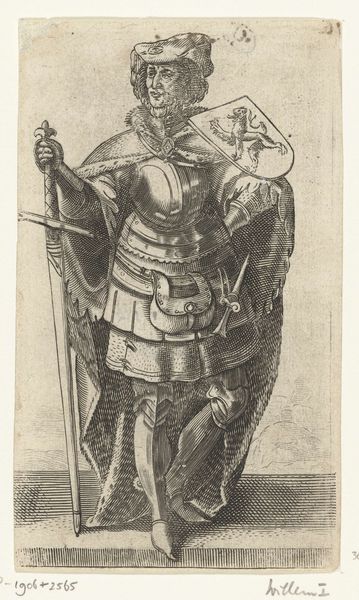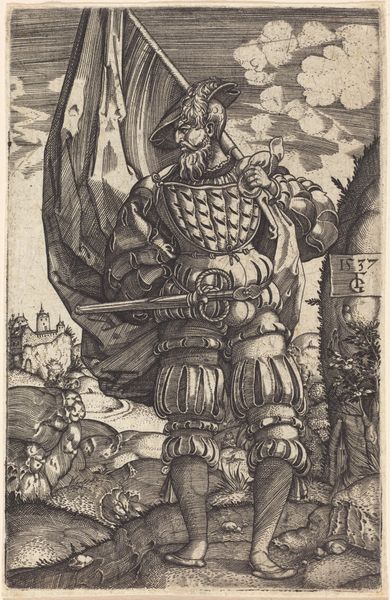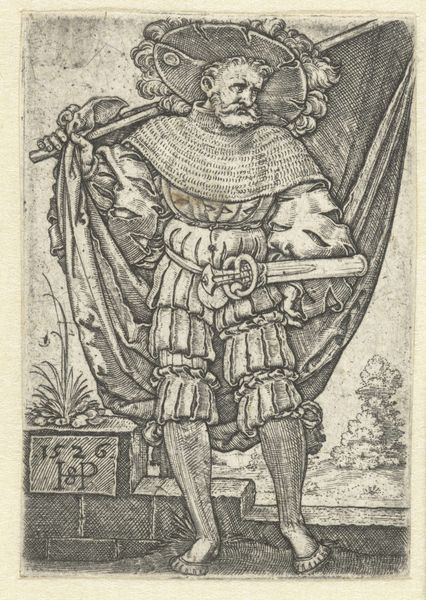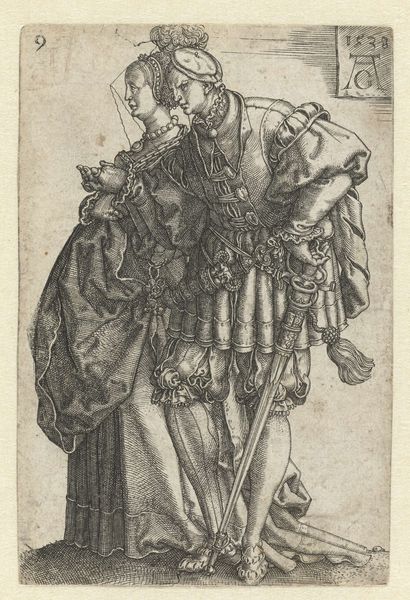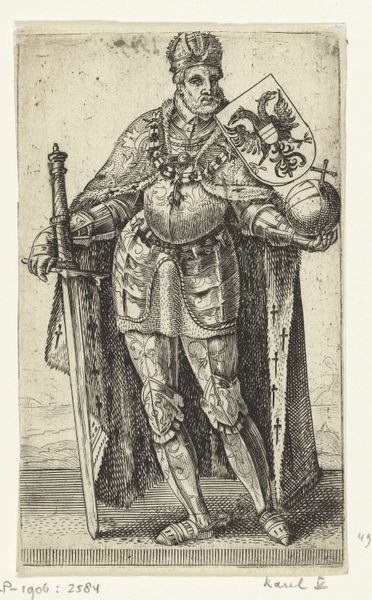
Emperor Maximilian I in the Guise of Saint George c. 1509 - 1510
0:00
0:00
print, engraving
#
portrait
# print
#
figuration
#
history-painting
#
northern-renaissance
#
engraving
Dimensions: sheet (trimmed to plate mark): 22.7 x 15.7 cm (8 15/16 x 6 3/16 in.)
Copyright: National Gallery of Art: CC0 1.0
Editor: So, here we have Daniel Hopfer's "Emperor Maximilian I in the Guise of Saint George," an engraving from around 1509-1510. The detail is amazing, but it's also quite… flattering, I suppose? It’s interesting to see a ruler portrayed as a saintly figure. What can you tell us about why Hopfer would create this portrait in this manner? Curator: Well, placing Maximilian in the guise of Saint George serves specific political and cultural functions. Hopfer isn't just creating an image, he is shaping a narrative, using established iconography. The cult of the saint-ruler was very powerful, it aimed to reinforce legitimacy and divine right. By associating Maximilian with Saint George, a celebrated military saint, the artist constructs an image of powerful, divinely sanctioned leadership. How do you think the print medium contributes to this purpose? Editor: Hmm, interesting! Is it because prints are more easily reproducible, therefore, they were more accessible? Like a PR campaign? Curator: Exactly. Prints circulated widely. Think about who the audience for these images might have been, and what messages the patrons or the state were trying to convey through widespread dissemination. Who had the most to gain with Maximilian's good image? Editor: Oh, for sure the court. Now that you mention it, the very choice of depicting the emperor in the guise of St. George also normalizes his leadership and faith through its implied association with an almost universally-recognized religious figure. That makes me think differently about this piece! Curator: Precisely! So the next time you see a ruler portrayed in symbolic clothing, you’ll be ready to think about the political message it’s supposed to send. Editor: Yes! I guess I was just looking at the surface before. Thank you for helping me to appreciate the historical context surrounding this fascinating image.
Comments
No comments
Be the first to comment and join the conversation on the ultimate creative platform.
